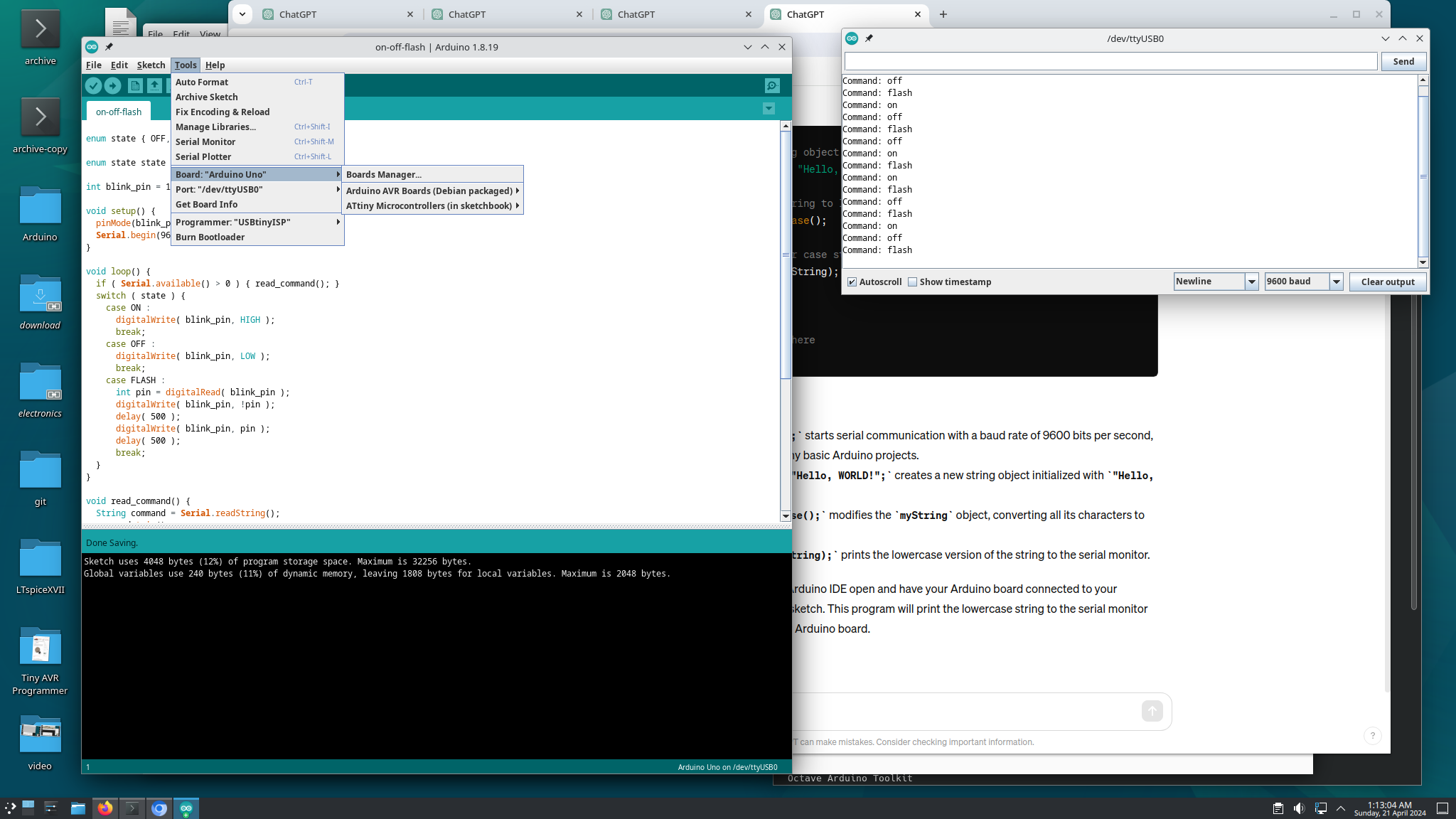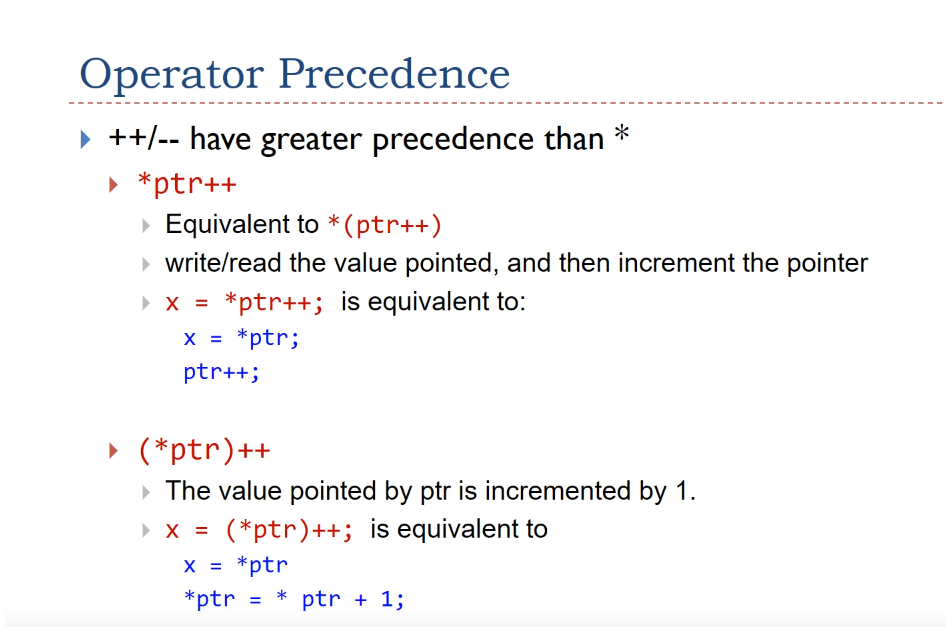@kline helped me with Phase 1 of my Crustacean Chirpy Chip Challenge project, which I have completed (sort of). I got the programming done but I didn’t do all the reading (yet).
Note to self: My Arduino Uno knockoff identifies itself as a “QinHeng Electronics USB Serial” USB device.
This is my code:
enum state { OFF, ON, FLASH };
enum state state = OFF;
int blink_pin = 13;
void setup() {
pinMode( blink_pin, OUTPUT );
Serial.begin( 9600 );
}
void loop() {
if ( Serial.available() > 0 ) { read_command(); }
switch ( state ) {
case ON :
digitalWrite( blink_pin, HIGH );
break;
case OFF :
digitalWrite( blink_pin, LOW );
break;
case FLASH :
int pin = digitalRead( blink_pin );
digitalWrite( blink_pin, !pin );
delay( 500 );
digitalWrite( blink_pin, pin );
delay( 500 );
break;
}
}
void read_command() {
String command = Serial.readString();
command.trim();
command.toLowerCase();
Serial.print( "Command: " );
Serial.println( command );
if ( command == "on" ) {
state = ON;
}
else if ( command == "off" ) {
state = OFF;
}
else if ( command == "flash" ) {
state = FLASH;
}
else {
Serial.println( "Unknown command." );
}
}
This is my setup:

The code which would actually implement the spec, as given:
void read_command() {
char c = Serial.read();
switch ( c ) {
case 'a' :
state = ON;
break;
case 's' :
state = OFF;
break;
}
}


